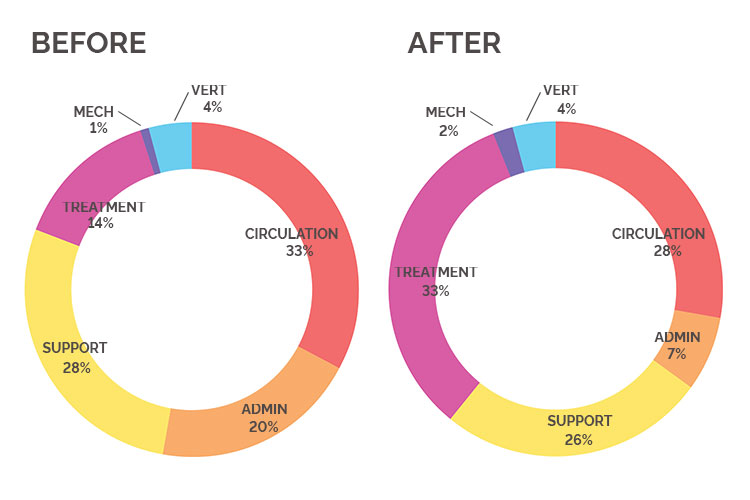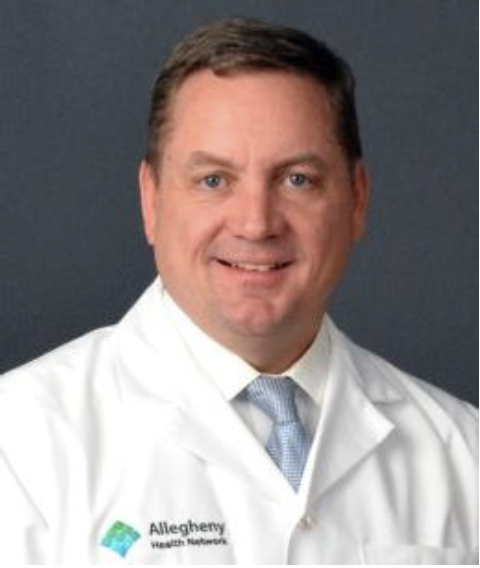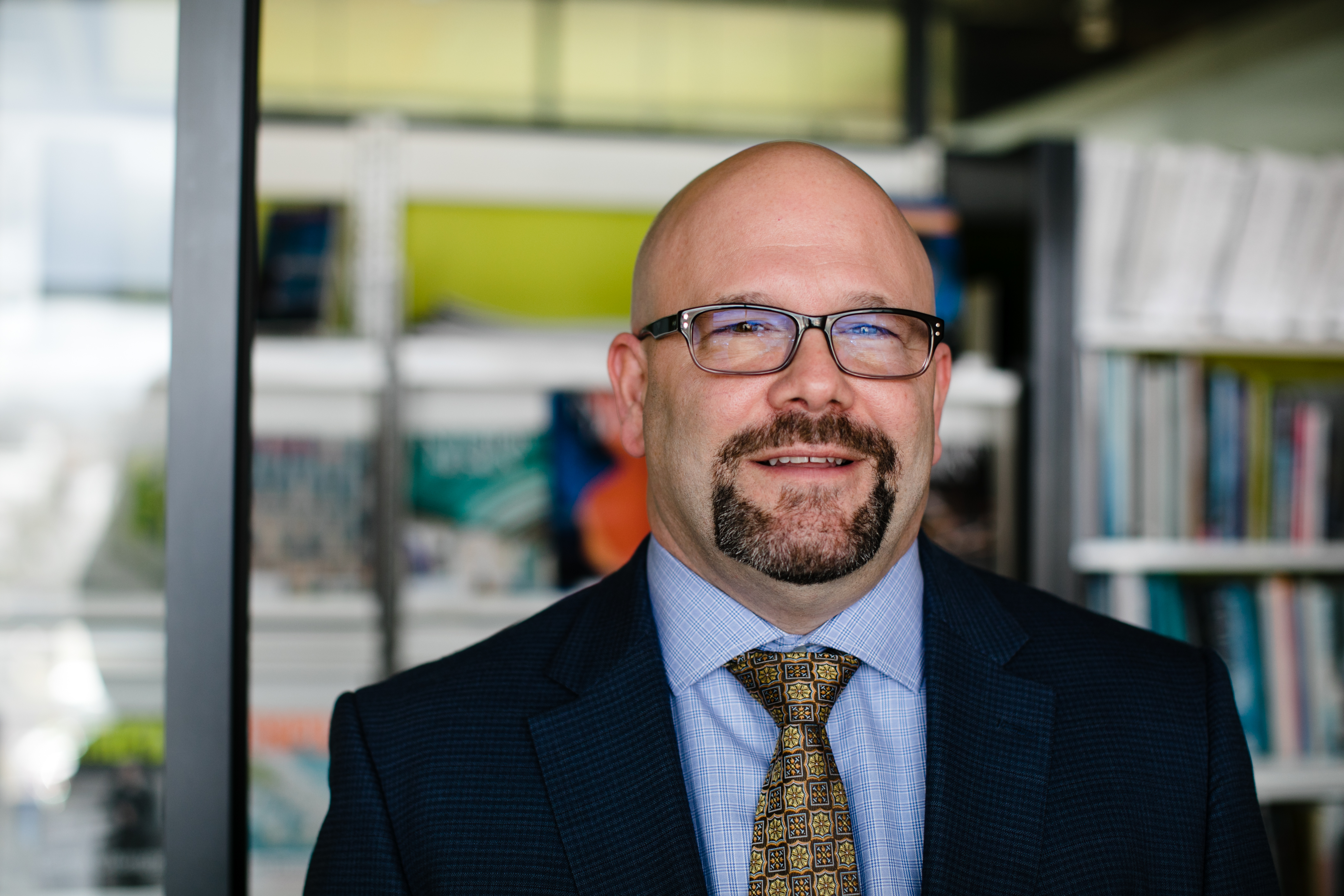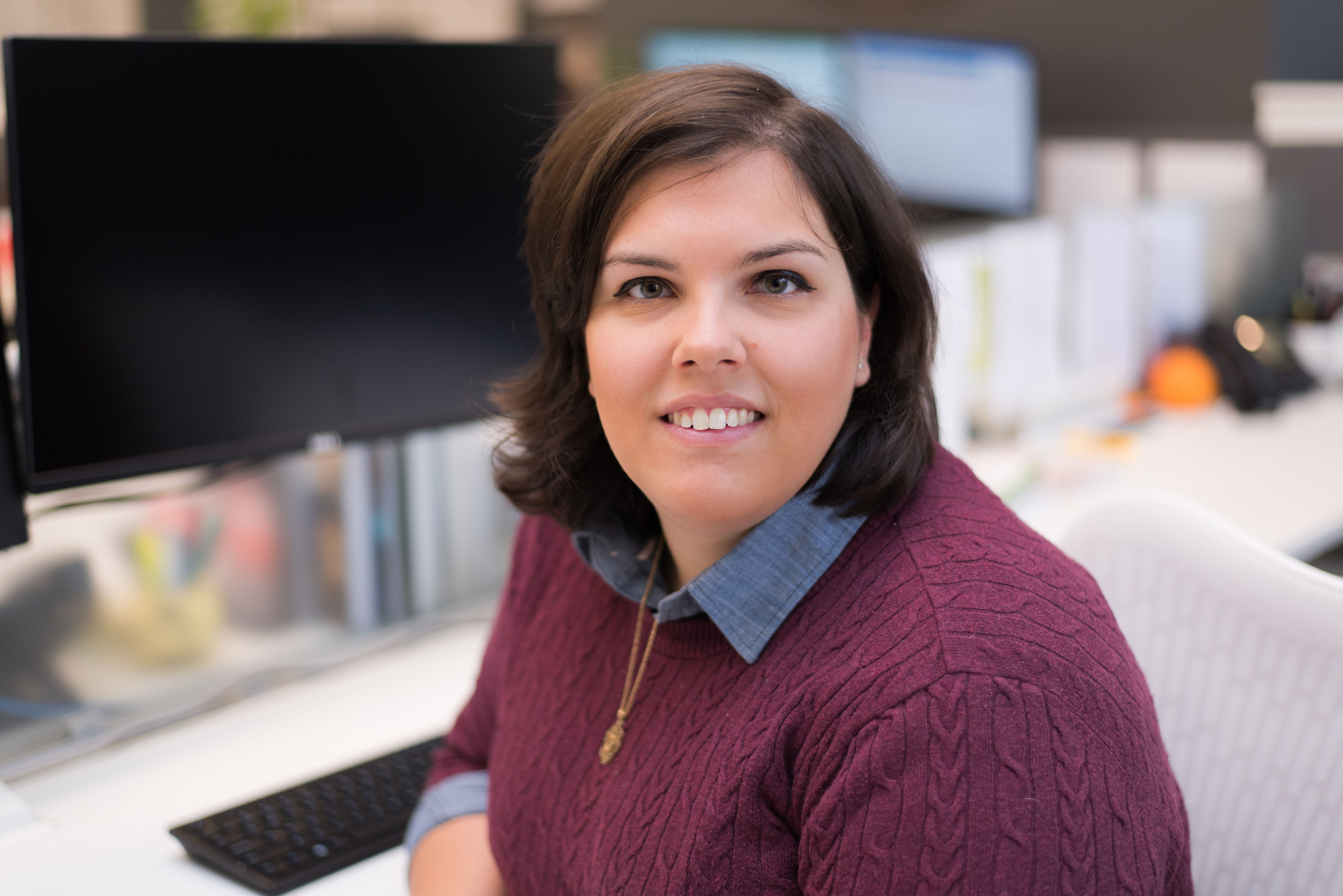What started as a series of individual imaging replacements in Pittsburgh’s West Penn Hospital became an opportunity to do much more – and reflect more deeply on patient and visitor experiences.
By: Tom Stanko AIA, ACHA // Project Manager, Healthcare Planner and Anastasia Markiw AIA, NCARB // Project Architect
When West Penn Hospital in Pittsburgh asked DesignGroup to plan, design, and replace aging radiology equipment, the team quickly saw an opportunity to do much more: upgrade the experience they provide to patients.
“We realized this is about patient access to healthcare,” says Dr. Bethany Casagranda, System Chair for the Imaging Institute at West Penn, part of Allegheny Health Network (AHN). “People come to us vulnerable. It's the front door for many of them. It’s an honor to care for people at that level.”
In this new Q-and-A, two key stakeholders in the project, Casagranda and Dr. Jeffrey Mueller, System Vice Chair for the Imaging Institute at West Penn, take us inside their process and share lessons every client needs to hear.
DesignGroup: How did your accelerated imaging project turn into a master plan for the entire department?
Dr. Mueller: For a variety of reasons, the system had not invested significant capital in imaging – scanners, common areas, layouts – in decades. And we had to address it very, very quickly. We were able to get the attention of AHN and say, we need a comprehensive plan at all of our facilities to address our aging equipment. A lot of this equipment was near end of life and not current with the trends or standards of medical imaging. It's like any other technology, right? If you're not on the cusp of what's going on, then you've already lost the battle.
On top of that, there has been a huge emphasis on patient experience. We're in a very competitive market, so for us to gain market share we have to emphasize it. The whole experience of a patient – coming into the facility, getting their exam, interacting with the staff, receiving follow-up results and care – all of that had to be reworked.
When we brought DesignGroup on board, we had two primary goals: address the patient experience and layout, and update the equipment to make it technologically competitive.

DG: So, you added the patient experience aspect to the scope of the work after looking at the department holistically?
Dr. Mueller: Correct. Originally it was an equipment replacement plan. As we started to walk the hallways in West Penn and review the facility from an objective standpoint, we realized the corridors were dark and kind of gloomy and the reception area could be improved. If you had to gown up, you might be walking through a common corridor rather than a private corridor.
We realized, if we're going to replace all this equipment and do all these buildouts, why not build it out in a way that makes sense for the patient? It definitely took on a larger role. Patients can go anywhere for their Imaging – we want them to feel welcome and comfortable.
Dr. Casagranda: Originally, we had a replace-in-place strategy. But with new FGI guidelines, we weren't able to just place new equipment where the previous machines used to be. That was discouraging at first, but then it became very clear that we had an opportunity to do something greater than just replacing equipment.
So, we thought bigger. We focused on optimal patient experience, which is near and dear to Dr. Mueller’s heart. To move into a comprehensive view focused on the patients – and not, per se, the machines – was a big difference for us.
DG: How did you engage your staff during this master planning process – gaining their buy-in and incorporating their feedback?
Dr. Mueller: We had a good big-picture idea of what we wanted in terms of patient experience and updating the equipment. But when it comes to the day-to-day operations, I'm not a nuclear medicine technologist. I’m not the one checking the patients in, prepping them, starting an IV, and taking them over to the scanner. Our staff does that day in and day out, and so it was important to engage them and find out what's important to them. And they responded – they were excited. We received input from the physician side as well. They do a lot of the procedures. They talk to the patients and teach the residents – they have their own needs. I think any good project manager will engage their audience and find out what is really needed.
Dr. Casagranda: We talked to our regional administrators, our managers, our physicians, our nurses and technologists. We met with people in transcription and registration. We reviewed everything from the first time a person walks into the facility to the moment they leave. You take all of that insight and pull it together with DesignGroup – people who have built similar places – and they make the plan even better.
Dr. Mueller: It can be a challenge, balancing what the staff wants with what the patients need. It’s important to engage people, bring them together, and try to balance different priorities.
Tom Stanko [of DesignGroup]: We talk quite a bit about how to bring masses of people together, and how that's such a huge challenge. But truth be told, we use this project as an example of how from top to bottom, everybody fully bought into the project. It was a monumental undertaking, but it has gone very, very smoothly for a multitude of reasons. And I'll give a lot of credit to [DesignGroup’s] Anastasia Markiw for how she arranged and handled the meetings with multiple groups, MBM Contracting {the Contractor for the project} who has helped strategize and provide detailed budgeting throughout, and to Dr. Casagranda and Dr. Mueller for getting complete buy-in from everybody. You could tell in the meetings we were all invested – that it's one team moving forward.

DG: What is your vision and your goals now that the master plan is complete?
Dr. Casagranda: We have applied for West Penn and 4 other sites to be Diagnostic Imaging Center of Excellence™. It takes months to prepare all the work that will be evaluated by the accreditation board, then a few more months for their visits. They will do a site visit in the middle of our construction, and we’ll show them physically what is done and virtually what is coming. It’s a painstaking process, but it’s the focus for our quality team. We want every place with an AHN logo to be able to diagnose people at the highest level possible.
Another goal for imaging is to simply remove as much stress from our patients as possible. We want people to find imaging peaceful and soothing. We know they're in an anxious state. One specific initiative we embarked upon was the Kids Corner of our waiting rooms, so there's something to occupy children while sitting in an adult hospital, with adult things happening around them. A good distraction for the kids takes a lot of pressure and stress off the patients. We're really trying to make it a place that they don't mind coming. If you're going to build it, why not build it so you can help the patient on their journey, versus just give them a place to sit down.
DG: Were there any surprises in the process? Things that you discovered about your staff or how you deliver care?
Dr. Casagranda: For me, it was an excellent education in what it costs to make this kind of change in a hospital. You start to see why it is such a challenge to keep these kinds of departments up to date. Historically, hospitals weren’t built around the patient experience. It’s time to truly start changing how we do business.
DesignGroup has a team of people, each with their individual talents. We know how to image patients. When you take all of their talents and then all of our clinical knowledge and put them together, the patient's really going to win. We learned it takes many talented people involved, more than I imagined. A lot of teamwork was involved, but also a lot of buy in.

DG: Is there anything unique about how DesignGroup approached this process that helped make the project a success?
Dr. Casagranda: DesignGroup definitely went above and beyond what I expected, [in terms of] making sure we made the right decisions, and for the project to be the very best it can be. Their accessibility has been amazing – DesignGroup is very quick to turn questions around. With so many different teams involved, from our vendors to our facilities, to contacting the physicians, safety, regulatory, they were effective at collaborating and managing input from many sources. Their organization has helped keep it all on track.
DG: How has COVID impacted workflow department readiness and workforce resilience? Were there any shifts to the master planning?
Dr. Mueller: COVID was a big hurdle. Not just for the patients and staff but the hospital as well. We were worried that with declining patient volumes the hospital might shut the project down. There have been a few delays, but nothing significant. I think being aligned with HIghmark certainly made a big difference. If we were just a hospital, I don't think this would have continued, to be honest. But in terms of the planning, we had Zoom; we didn't have to meet in person. We could do it effectively over the phone, sharing screens. And that allowed all the parties to come together and move the planning forward. I don't think we saw any significant delays and I don't think our long term strategy changed in any meaningful way due to COVID.
DG: If you were talking to someone in your position at another system who was getting ready to embark on this, what lessons would you share with them?
Dr. Casagranda: First, I would say prepare to take more time than you imagined, because if you're not in the business of construction or architecture or design, you don’t know all the layers it takes to make this work. So be ready for that. And second, no matter how many master planning meetings are on your calendar this week, remind yourself what a gift it is to be able to build something. That’s how I see this: It’s an absolute gift to be able to build exactly what we want for our patients. I know many chairs will come and go and never have that opportunity. It can be exhausting, but we know it's going to be worth the work.
Dr. Mueller: I don't have anything to add to that. You said it perfectly
Our Interviewees:

Dr. Bethany U. Casagranda, System Chair, Department of Radiology Physician Lead, The Imaging Institute // Allegheny Health Network and Associate Professor, Musculoskeletal Radiology // Drexel University College of Medicine
Bethany Casagranda, D.O. is an academic Musculoskeletal (MSK) radiologist from Pittsburgh, PA. She completed her residency and fellowship training at the University of Pittsburgh in 2008 where she remained on Faculty until 2013. At that time, she moved to Allegheny General Hospital (AGH), part of Allegheny Health Network also in Pittsburgh. Here she has held positions including Program Director of the Radiology Residency, MSK Fellowship Director and the MSK Division Director. In June of 2017 she was promoted to System Chair of Radiology for the Allegheny Health Network which encompasses 10 hospitals and multiple outpatient imaging centers. She continues to do clinical work within the MSK division providing orthopaedic imaging care covering a breadth of pathology including trauma, tumor, weekend warriors, aging locals and sports medicine. She, along with her MSK colleagues, work closely with their orthopaedic associates at her institution to care for the Pittsburgh Pirates.

Dr. Jeffrey Mueller, System Vice Chair, Imaging Institute Division Head, Cardiothoracic Imaging // Allegheny Health Network and Associate Professor of Radiologic Sciences // Drexel University College of Medicine
Jeffrey Mueller, M.D. is an academic Cardiothoracic radiologist from Pittsburgh, PA. He completed his residency at the University of Minnesota in 2005 and fellowship training at the University of Maryland in 2006. At that time, he accepted a faculty position at Allegheny General Hospital (AGH) and Allegheny Radiology Associates (ARA), which are now part of the Allegheny Health Network (AHN). He has held several leadership positions including Division Director and Fellowship Director of the Cardiothoracic Division, Clinical Director for the Lung Cancer Screening Program, System Directors for Quality and Information Technology, Trustee and Executive Committee Member for ARA, and Chair of the Peer Review Committee. In June of 2017, he was promoted to System Vice Chair of the Imaging Institute for the Allegheny Health Network which encompasses 10 hospitals and multiple outpatient imaging centers. He continues to do clinical work and lead the Cardiothoracic division providing cardiovascular, respiratory, oncology, and critical care imaging. He works closely with the cardiovascular and thoracic surgeons, cardiologists, pulmonary and critical care intensivists, and oncology physicians at AHN.
Our Interviewers:

Tom Stanko AIA, ACHA // Project Manager, Healthcare Planner
Tom brings more than 26 years of dedicated healthcare experience in the Pittsburgh market. He has worked in a variety of healthcare environments from hospitals to outpatient facilities. Tom is an experienced project manager attentive to team coordination and client communication. He is committed to providing successful projects through teamwork, communication and dedication to our clients as well as the design and construction teams.

Anastasia Markiw, AIA, NCARB, LEED Green Associate // Project Architect
Anastasia offers an innovative perspective to her position as a Project Architect by attending the only post-professional Masters in Health Care Design program in the country. She has advanced her understanding of healthcare architecture through an appreciation for patient care through the use of medical frameworks and design. She strengthened her leadership skills by volunteering in the community and accomplishing the highest Girl Scouts achievement; the Gold Award. Anastasia is fueled by her passion for lighting design, which aids in her understanding of the connection between healing spaces and their intangible experiences; she believes that a working coexistence between architecture and sustainable technology can supply a multitude of design possibilities for a space and its occupants.
